In today's interconnected world, maintaining a robust network infrastructure is vital for the smooth operations of businesses and organizations. As technology continues to evolve, it is crucial for system administrators to have the right tools and solutions in place to monitor and manage their networks effectively. One such tool that has gained widespread recognition and popularity is Nagios, a powerful open-source monitoring system that allows for comprehensive network monitoring and fault detection.
While Nagios is widely known for its robust features and flexibility in Linux environments, it can also be seamlessly integrated with Windows systems. This article aims to guide system administrators in setting up and utilizing Nagios for Windows monitoring on a Linux platform. By leveraging the strengths of both Linux and Nagios, administrators can benefit from a unified monitoring solution that covers their entire network, regardless of the operating system being used.
This article will cover the step-by-step process of configuring Nagios on a Linux server, configuring Windows hosts for monitoring, and setting up checks and notifications for various Windows services and applications. Additionally, it will explore the advantages of using Nagios in a mixed operating system environment, highlighting the flexibility and extensibility that Nagios offers.
By the end of this article, system administrators will have a comprehensive understanding of how to utilize Nagios for Windows monitoring on Linux, empowering them to proactively detect and address network issues, ensuring the optimal performance and reliability of their network infrastructure.
Introduction: The Significance of Nagios in the Field of Monitoring
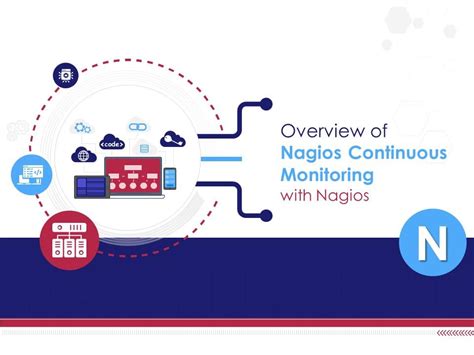
In the realm of monitoring, there exists a crucial tool that plays a vital role in ensuring the smooth operation and optimal performance of systems. This tool, known as Nagios, holds immense importance for organizations seeking to maintain a reliable and efficient IT infrastructure. Through its extensive capabilities and cross-platform functionality, Nagios enables administrators to monitor and track various aspects of their network, servers, and applications.
From ensuring the availability of critical services to detecting and resolving issues promptly, Nagios provides a comprehensive monitoring solution that empowers organizations to proactively address potential problems before they escalate. By utilizing Nagios, businesses can achieve enhanced reliability, improved uptime, and a streamlined workflow. This powerful tool allows administrators to monitor a wide range of parameters, such as network connectivity, system metrics, application performance, and server health, thereby enabling them to make informed decisions based on real-time data.
Nagios possesses the ability to monitor multiple platforms and systems, making it a versatile tool that can be implemented in various environments. Its cross-platform compatibility ensures seamless integration, enabling administrators to monitor Windows systems from a Linux environment efficiently. This capability is especially valuable for organizations operating heterogeneous environments, as it eliminates the need for separate monitoring solutions for each operating system.
- Nagios enables effective network monitoring, providing administrators with visibility into network performance, bandwidth usage, and the ability to detect and troubleshoot issues promptly.
- With Nagios, administrators can actively monitor the health and status of servers and identify potential problems or bottlenecks that may impact performance and availability.
- Application monitoring is made seamless through Nagios, as it allows administrators to track critical components and performance metrics of applications, ensuring optimal functionality.
Overall, Nagios serves as an indispensable tool in the field of monitoring, allowing organizations to maintain a stable and secure IT infrastructure. By providing real-time insights, robust alerting mechanisms, and comprehensive reporting, Nagios empowers administrators to proactively address issues and ensure the smooth operation of their systems.
Implementing Nagios for Monitoring Windows Systems on Linux
In this section, we will explore the process of setting up Nagios to effectively monitor the performance and status of Windows systems from a Linux environment. We will delve into the steps required to configure Nagios specifically for Windows monitoring, without compromising the integrity of the Linux platform.
We will begin by discussing the necessary prerequisites for this integration, highlighting the compatibility factors and dependencies required for seamless communication between Nagios and Windows systems. Emphasis will be placed on establishing a reliable connection and ensuring the compatibility of monitoring plugins.
Next, we will walk through the installation process of Nagios on Linux, providing step-by-step instructions to ensure a successful deployment. We will focus on the required configurations and settings specific to Windows monitoring, including the setup of communication protocols and the installation of necessary dependencies.
Once Nagios is successfully installed, we will guide you through the process of configuring Windows hosts within the Nagios framework. This includes defining host groups, setting up monitoring parameters, and establishing appropriate escalation policies for different types of alerts and notifications.
We will then explore the various monitoring capabilities that Nagios offers specifically for Windows systems. This will cover options for monitoring CPU usage, memory utilization, disk space, network connectivity, and various other performance metrics that are crucial for maintaining the stability and reliability of Windows systems.
Finally, we will delve into advanced features and customization options that Nagios provides for Windows monitoring. This will include the ability to create custom plugins, integrate additional monitoring tools, and leverage the power of Nagios communities for enhanced troubleshooting and knowledge sharing.
By the end of this section, you will have a comprehensive understanding of the steps required to successfully set up Nagios for Windows monitoring on a Linux environment. You will be equipped with the knowledge to effectively monitor the health and performance of your Windows systems, ensuring optimal efficiency and minimized downtime.
Installation and configuration of Nagios server on a Linux system
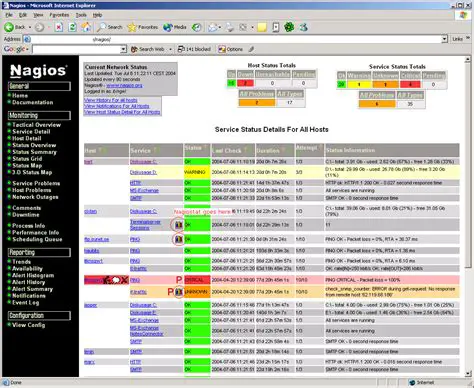
Setting up and configuring Nagios server on a Linux system involves a series of steps to ensure proper functioning and effective monitoring. In this section, we will explore the installation process and the necessary configurations required to get Nagios up and running on your Linux environment.
- Step 1: Preparing the Linux system
- Step 2: Downloading Nagios server
- Step 3: Installing Nagios server
- Step 4: Configuring Nagios
- Step 5: Verifying the Nagios installation
Prior to installing Nagios, it is essential to ensure that your Linux system meets the necessary requirements. This involves checking the operating system version, verifying the availability of required dependencies, and making any necessary updates or installations.
In this step, you will download the latest version of the Nagios server from the official Nagios website. This ensures that you have the most up-to-date features and bug fixes.
Once you have downloaded the Nagios server package, you can proceed with the installation process. This typically involves extracting the package, running the installation script, and following the prompts to complete the installation.
After the installation, you need to configure Nagios to suit your monitoring needs. This includes setting up various parameters such as network devices, services to monitor, notification settings, and access controls. We will explore the configuration files and explain the essential settings that need to be modified.
Once the installation and configuration are complete, it is crucial to verify that Nagios is working correctly. This involves checking the Nagios web interface, running test checks, and ensuring that notifications are being sent as expected.
By following the steps outlined in this section, you will be able to successfully install and configure Nagios server on a Linux system. This will enable you to effectively monitor your network and services, ensuring a robust and reliable infrastructure.
Configuring Nagios to Monitor Windows Machines
In this section, we will explore the process of configuring Nagios to effectively monitor Windows machines on a Linux system. By customizing the settings and parameters of Nagios, you can ensure seamless monitoring of your Windows infrastructure, enabling proactive identification and resolution of potential issues.
Integration and Compatibility: Before configuring Nagios for Windows monitoring, it is essential to ensure the integration and compatibility of the software with the desired Windows machines. This involves checking the supported versions and updates, as well as understanding any necessary prerequisites or additional components needed for successful communication.
Defining Hosts: Once the compatibility is confirmed, the next step is to define the Windows machines as hosts within the Nagios configuration. This involves specifying their unique identifiers, such as IP addresses or host names, and assigning appropriate attributes and group memberships for efficient management and categorization.
Implementing Service Checks: After defining the hosts, it is crucial to configure service checks that reflect the specific monitoring requirements for each Windows machine. This may include checks for CPU usage, memory utilization, disk space availability, network connectivity, and other relevant metrics. By defining comprehensive service checks, you can gather accurate performance data and promptly detect any deviations or anomalies.
Setting up Notifications: To ensure timely awareness of critical issues, Nagios allows the configuration of notification settings. This can involve defining contact information for responsible personnel, setting up escalation policies, and establishing thresholds for triggering appropriate notifications. Properly configuring notifications helps maintain an efficient incident response process and minimizes any potential downtime or impact on Windows machines.
Reviewing and Tuning: Finally, it is essential to regularly review and fine-tune the Nagios configuration for Windows monitoring. This involves analyzing monitoring results, identifying any false positives or negatives, adjusting thresholds, and optimizing performance. By continuously refining the configuration, you can enhance the accuracy and effectiveness of Nagios in monitoring your Windows environment.
By following these steps, you can effectively configure Nagios to monitor your Windows machines on a Linux system. This proactive approach to monitoring ensures early detection of issues, facilitating prompt resolution and helping to maintain the overall health and performance of your Windows infrastructure.
Configuring Plugins for Windows System Monitoring
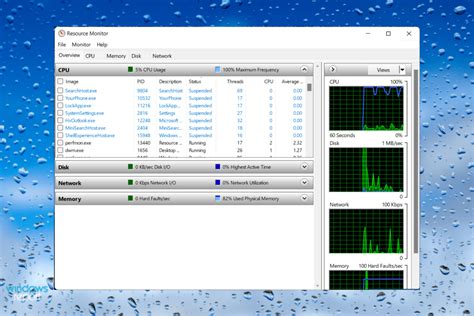
In this section, we will explore the process of setting up and configuring plugins specifically designed for monitoring Windows systems within the Nagios environment. These plugins will allow you to gather essential information and metrics from Windows machines, providing you with valuable insights into their performance and health status.
Plugin Installation: To get started, you will need to install the necessary plugins on your Nagios server. These plugins are designed to communicate with Windows machines and retrieve data related to various aspects, such as CPU usage, memory utilization, disk space, and network connectivity. Once installed, these plugins can be easily integrated into your Nagios monitoring system.
Plugin Configuration: After installing the required plugins, you will need to configure them to work seamlessly with your Windows machines. This configuration involves specifying the appropriate parameters, such as the target host IP address, credentials for authentication, and the specific metrics or checks that you want to monitor. By customizing the plugin configuration, you can tailor the monitoring to suit your specific Windows environment.
Testing and Troubleshooting: Once the plugins are installed and configured, it is crucial to test their functionality and ensure that they are functioning correctly. This involves running test checks against the Windows systems and verifying that the expected data is being retrieved accurately. Additionally, if any issues or errors arise during this process, it is important to troubleshoot and resolve them promptly to maintain the effectiveness of your monitoring setup.
Creating Custom Plugins: In some cases, the existing plugins may not cater to your specific monitoring needs. In such instances, you may need to create custom plugins using scripting languages such as PowerShell or VBScript. These custom plugins can be tailored to gather specialized metrics or perform unique checks that are specific to your Windows environment.
By following the steps outlined in this section, you will be able to successfully configure and utilize plugins for monitoring Windows systems within your Nagios setup. This will enable you to ensure the smooth operation and optimal performance of your Windows infrastructure, enhancing overall system stability and reliability.
Utilizing Nagios to Monitor Windows Systems on a Linux Environment
Unleashing the potential of Nagios for overseeing Windows systems on a Linux setup can bring about efficient and seamless monitoring solutions. In this section, we will explore the power of Nagios in ensuring the smooth operation of Windows-based infrastructure, all within the realm of a Linux environment.
With Nagios as your trusted companion, you can harness its capabilities to keep a watchful eye on crucial aspects such as performance metrics, event logs, and system health of your Windows machines. By integrating Nagios with Linux, you can tap into a versatile system that enables you to monitor diverse Windows environments with ease and precision.
Through the advanced functionality of Nagios, you can actively track and analyze crucial indicators, such as network connectivity, resource utilization, and service availability, across your Windows infrastructure. By leveraging Nagios' extensive monitoring capabilities, system administrators can proactively identify and address issues before they escalate, ensuring optimal performance and stability.
Moreover, by utilizing Nagios for Windows monitoring, you can seamlessly integrate your existing Linux monitoring processes. By consolidating the monitoring of Windows systems into your Linux-based Nagios setup, you can streamline administrative tasks, improve efficiency, and enjoy a unified view of your entire infrastructure.
From real-time alerts and notifications to comprehensive reporting and trend analysis, Nagios equips you with the tools needed to maintain a robust and reliable Windows ecosystem with ease. With the ability to customize monitoring configurations, automate tasks, and integrate with other tools, Nagios empowers you to tailor your monitoring solution to fit the unique requirements of your Windows environment.
In summary, the integration of Nagios with Linux opens up a world of possibilities for effectively monitoring and managing Windows systems. By harnessing Nagios' capabilities, you can ensure the stability, performance, and availability of your Windows infrastructure, all while working within the familiar Linux environment.
Creating and managing Nagios host and service configurations
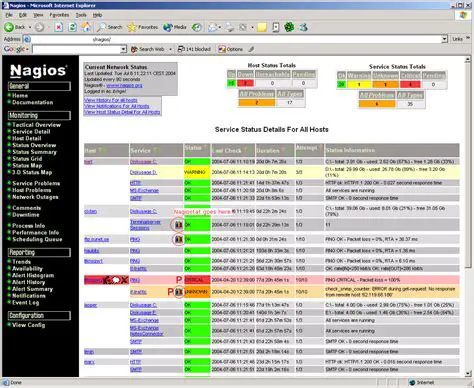
In this section, we will explore the process of creating and managing configurations for Nagios hosts and services. We will discuss how to set up and define specific parameters for monitoring various aspects of your Windows environment using Nagios on a Linux system.
First, we will delve into the process of creating host configurations in Nagios. This involves defining the hosts you want to monitor and specifying their IP addresses, hostnames, and additional attributes. We will explore the various options available for customizing host configurations, including defining host groups, setting up notifications, and establishing dependencies between hosts.
Next, we will move on to managing service configurations in Nagios. This involves specifying the services you want to monitor on each host, such as CPU usage, disk space, network connectivity, and more. We will discuss how to define service checks, set thresholds for alerts, and configure service dependencies.
Throughout the section, we will highlight best practices for managing configurations effectively. We will provide examples and guidance on writing configuration files using the Nagios object definition format. Additionally, we will explore how to validate and troubleshoot configurations to ensure their accuracy and reliability.
By the end of this section, you will have a thorough understanding of how to create and manage Nagios configurations for monitoring Windows systems on a Linux platform. You will be equipped with the knowledge and skills to effectively monitor and maintain the health and performance of your Windows environment using Nagios.
Monitoring Windows services and processes with Nagios
In this section, we will explore how Nagios, a powerful monitoring system, can be utilized to keep track of the various services and processes running on a Windows operating system. By monitoring these critical components, organizations can ensure their systems are running smoothly, identify potential issues before they become major problems, and maintain the overall stability and performance of their Windows infrastructure.
Monitoring Windows services:
Nagios offers a comprehensive set of features to monitor the availability and status of Windows services. Through its intuitive interface, administrators can define specific service checks and set thresholds for warning and critical states. Nagios regularly queries the service status and alerts administrators when any deviation from the expected state occurs. With these monitoring capabilities, organizations can proactively address service outages, minimize downtime, and ensure the uninterrupted operation of their Windows services.
Synonyms: supervising, overseeing, keeping an eye on, checking, inspecting
Monitoring Windows processes:
In addition to services, Nagios also enables monitoring of Windows processes. By continually monitoring the utilization, performance, and stability of critical processes, organizations can identify potential bottlenecks, memory leaks, or other issues that may impact system performance. Nagios provides a flexible environment to define process-specific checks, establish appropriate thresholds, and issue instant notifications when abnormal behavior is detected. By closely monitoring Windows processes, organizations can optimize resource allocation, troubleshoot performance problems, and enhance the overall efficiency of their Windows environment.
Synonyms: scrutinizing, observing, examining, tracking, watching
With Nagios as their monitoring solution, organizations can effectively oversee and manage the health and performance of their Windows services and processes. By implementing proactive monitoring practices, they can identify and address potential issues in a timely manner, ensuring the stability, availability, and reliability of their Windows infrastructure.
Configuring Notifications and Alerts for Windows Monitoring
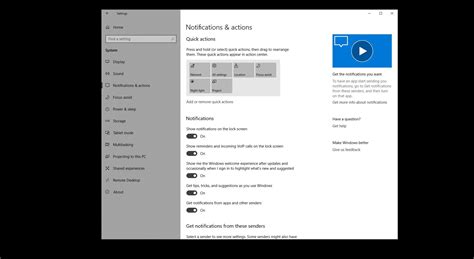
In this section, we will explore the process of setting up notifications and alerts for monitoring Windows systems using Nagios on a Linux platform. By configuring alerts and notifications, you can ensure that you receive timely information about critical events and issues in your Windows infrastructure.
To begin, we will discuss the importance of notifications and alerts in a monitoring setup. Notifications play a crucial role in keeping system administrators informed about the status of their Windows environment. They serve as proactive indicators, alerting administrators to potential problems or anomalies that require attention.
- Step 1: Defining notification contacts and groups
- Step 2: Configuring notification commands
- Step 3: Enabling alert notifications for specific services or hosts
- Step 4: Customizing notification options and time periods
First, we will cover the process of defining notification contacts and groups in Nagios. Notification contacts represent individuals or groups who should be notified when a problem occurs. By organizing contacts into groups, you can easily manage notifications for different teams or departments.
Next, we will discuss how to configure notification commands in Nagios. Notification commands define the methods through which notifications are delivered, such as email, SMS, or instant messaging. By setting up the appropriate commands, you can ensure that alerts reach the relevant recipients using their preferred communication channels.
Once the notification contacts and commands are defined, we will move on to enabling alert notifications for specific services or hosts. This step involves specifying the criteria that trigger a notification, such as a certain threshold being exceeded or a service becoming unavailable. By configuring selective notifications, you can minimize unnecessary alerts and focus on the critical issues.
Finally, we will explore the options for customizing notification settings and time periods. Nagios provides flexibility in defining when and how often notifications should be sent. By tailoring these settings, you can ensure that notifications are delivered at the appropriate times and avoid overwhelming your recipients with excessive alerts.
By following these steps, you will be able to effectively configure notifications and alerts for Windows monitoring using Nagios on a Linux platform. This proactive approach to monitoring will empower you to promptly address any issues in your Windows infrastructure and maintain optimal system performance.
Free network monitoring tools on Windows | Zabbix | NETVN
Free network monitoring tools on Windows | Zabbix | NETVN by NETVN82 106,743 views 3 years ago 16 minutes
FAQ
What is Nagios and why is it useful for Windows monitoring on Linux?
Nagios is an open-source monitoring tool that allows users to monitor their systems, networks, and infrastructure. It is useful for Windows monitoring on Linux as it provides a centralized platform to monitor and manage Windows servers and services from a Linux machine.
How can I set up Nagios for Windows monitoring on Linux?
To set up Nagios for Windows monitoring on Linux, you will first need to install Nagios on your Linux machine. Then, you will need to configure Nagios to monitor Windows hosts by installing the necessary plugins and configuring the Windows targets in the Nagios configuration files. Finally, you can start monitoring the Windows machines from your Linux Nagios server.
What are the benefits of using Nagios for Windows monitoring on Linux?
There are several benefits of using Nagios for Windows monitoring on Linux. Firstly, Nagios provides a centralized monitoring platform, allowing you to monitor multiple Windows machines from a single Linux server. It also offers a wide range of monitoring plugins and checks, allowing you to monitor various aspects of your Windows infrastructure. Additionally, Nagios provides alerting capabilities, notifying you in real-time when issues are detected, enabling timely troubleshooting and resolution.
Can Nagios monitor Windows-specific metrics and services?
Yes, Nagios can monitor Windows-specific metrics and services. It supports monitoring of various Windows services, such as CPU usage, memory usage, disk usage, network traffic, and more. Additionally, Nagios can monitor Windows-specific applications and processes, allowing you to ensure their availability and performance.
Are there any alternatives to Nagios for Windows monitoring on Linux?
Yes, there are alternative monitoring tools available for Windows monitoring on Linux. Some popular alternatives to Nagios include Zabbix, Icinga, and Prometheus. These tools offer similar functionality to Nagios and can also be used to monitor Windows machines from a Linux server.
What is Nagios and why is it used for Windows monitoring on Linux?
Nagios is a powerful open-source tool used for monitoring system, network, and infrastructure. It is commonly used for Windows monitoring on Linux because it provides a centralized monitoring solution, allowing administrators to track the health and performance of Windows machines from a Linux server.




